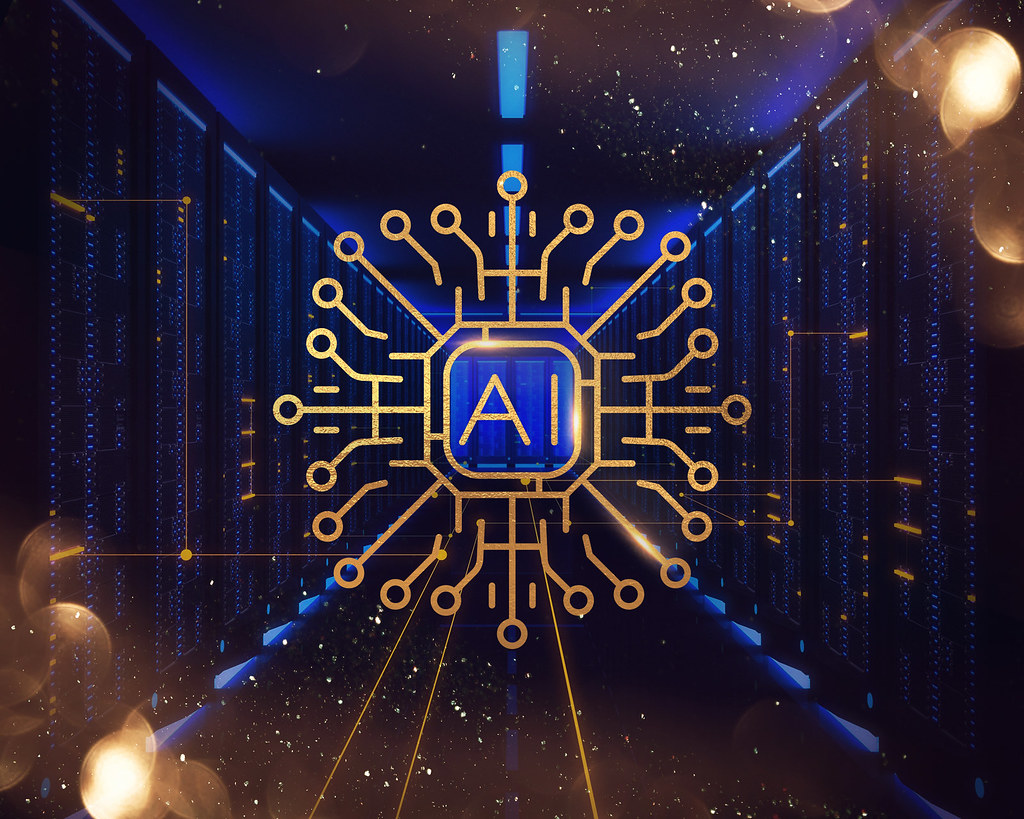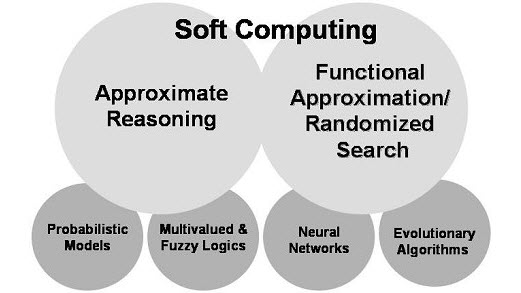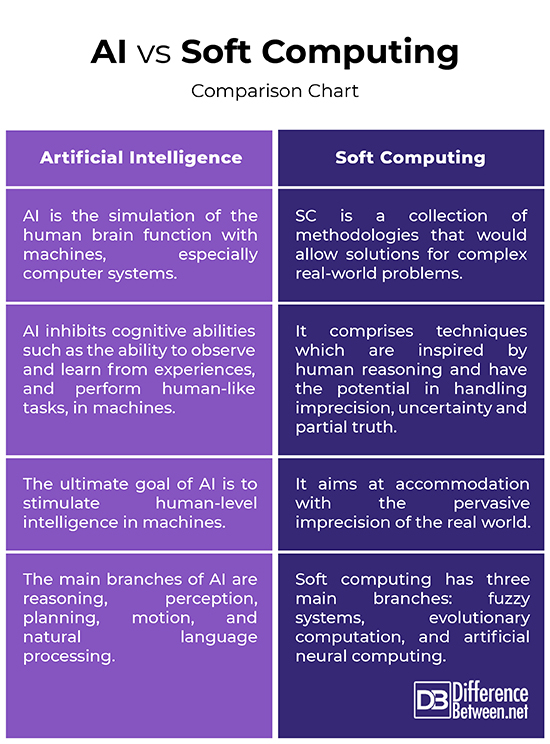Difference Between AI and Soft Computing
The practice of Artificial Intelligence has been an integral part of science and engineering for centuries but it wasn’t until the 1950’s when the true potential of AI was explored. John McCarthy first coined the term AI in 1956 and defined the same as “the science and engineering of making intelligent machines.” Traditional AI systems were based on first-order logic and symbolic information processing which allowed for the creation of different pattern recognition systems, while there have been other systems which were based on what you can call the Hard Computing technology. But there wasn’t much scope for AI in some other areas such as machine translation, which called for a new approach for the development of Intelligent Systems with high level of MIQ.
This gave rise to a new computational model called Soft Computing which, as opposed to traditional computing methodologies, represents a collection of methodologies such as Fuzzy Logic, Evolutionary Computing, Neurocomputing, Probabilistic Computing, and Chaotic Computing that allowed the solution of complex real-world problems. It is a branch of science that aims to build intelligent and wiser machines which will work in a similar way as human beings can do. The human mind is the principal element for soft computing. AI is a much broader term that describes applications when machines are able to carry out complex tasks in a way which would be considered smart.
What is Artificial Intelligence?
Artificial Intelligence (AI), often called machine intelligence, is the simulation of the functionality of human brain with machines. AI is one of the most sophisticated technologies till date and also the beginning of a new digital era run by smart machines. AI is not just a technology; it’s an idea of creating intelligent machines – the ones that are as smart as or smarter than humans. Well, the concept is not new but it only became mainstream with the rise of digital computers. Much of AI was once a distant dream but it’s now regarded as everyday computing technology. The ultimate goal of AI is to stimulate human-level intelligence in machines.
What is Soft Computing?
Soft Computing (SC) represents a collection of methodologies that would allow solutions for complex real-world problems. It is a combination of intelligent paradigms, such as Fuzzy Logic (FL), Evolutionary Computing (EC), Neurocomputing, Probabilistic Computing, and Chaotic Computing, which aim to exploit tolerance for uncertainty, imprecision, and partial truth without loss of performance and effectiveness for the end use. The role model for SC is the human mind. In contrast to conventional analytical methodologies, soft computing methods mimic consciousness and cognition in several different respects. It aims at accommodation with the pervasive imprecision of the real world. SC techniques plan a fundamental role across various science and engineering disciplines.
Difference between AI and Soft Computing
Definition
– Artificial Intelligence is the art and science of developing intelligent machines with the ability to think, learn and respond, much like human beings. AI is the simulation of the human brain function with machines, especially computer systems. Soft Computing (SC), on the other hand, is a collection of methodologies which aim to exploit tolerance for uncertainty, imprecision, and partial truth without loss of performance and effectiveness for the end use.
Goal
– The ultimate goal of AI is to create machines, particularly computer systems, which exhibit human-level intelligence – that is the ability to learn, understand, behave and react like human beings. The idea is to make machines smart in a multitude of tasks that involve reasoning and thinking. On the other hand, the human mind is the principal element for soft computing. The idea is quite similar – to create intelligent machines to provide solutions to complex real-world problems, which are not mathematically modeled.
Role
– AI plays a fundamental role in finding missing pieces between the interesting real world problems. AI inhibits cognitive abilities such as the ability to observe and learn from experiences, and perform human-like tasks, in machines. AI mimics human brain in a robot, allowing it to execute functions like decision-making and problem-solving. Soft Computing comprises techniques which are inspired by human reasoning and have the potential in handling imprecision, uncertainty and partial truth.
Applications
– Soft computing methodologies are used widely across various science and engineering disciplines such as data mining, electronics, automotive, aerospace, marine, robotics, defense, industrial, medical and business applications. Soft computing has three main branches: fuzzy systems, evolutionary computation, and artificial neural computing. AI is a jargon-rich area and biologically inspired and for years, biology has been taking inspiration and learning from AI research. That being said, AI has countless applications in healthcare, particularly analyzing complicated medical data and relationship between preventive techniques and patient outcomes.
AI vs. Soft Computing: Comparison Chart
Summary of Artificial Intelligence I vs. Soft Computing
Both AI and Soft Computing are non-systematic, data-driven tools to solve complex real-world problems. The biggest advantage of AI is its ability to filter massive volumes of data in the least time possible. AI tends to solve human-level problems such as pattern recognition, problem solving, plan execution, automating analytical tasks, asset management, identifying efficiencies, performance improvement, and so on. Soft computing, on the other hand, aims to provide solutions to complex real-world problems, which are not mathematically modeled.
- Difference Between Caucus and Primary - June 18, 2024
- Difference Between PPO and POS - May 30, 2024
- Difference Between RFID and NFC - May 28, 2024
Search DifferenceBetween.net :
Leave a Response
References :
[0]Image credit: https://commons.wikimedia.org/wiki/File:Soft_Computing_pic.jpg
[1]Image credit: https://live.staticflickr.com/1952/44405376514_f832e62fed_b.jpg
[2]Aliev, R.A. and R.R. Aliev. Soft Computing and Its Applications. Singapore: World Scientific, 2001. Print
[3]Chaturvedi, Devendra K. Soft Computing: Techniques and its Applications in Electrical Engineering. Berlin, Germany: Springer, 2008. Print
[4]Chakraverty, Snehashish, et al. Concepts of Soft Computing: Fuzzy and ANN with Programming. Berlin, Germany: Springer, 2019. Print
[5]Whitby, Blay. Artificial Intelligence: A Beginner's Guide. London, UK: Oneworld Publications, 2012. Print



